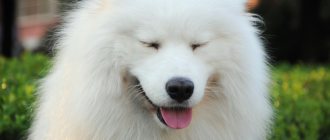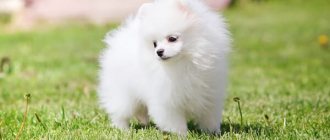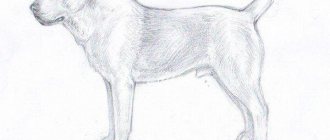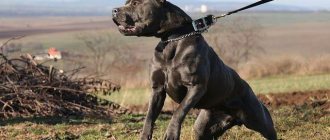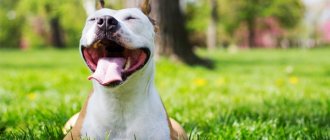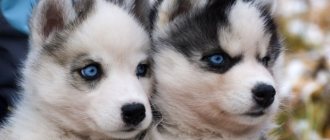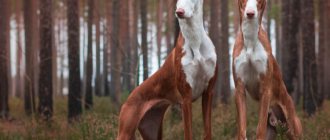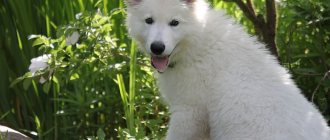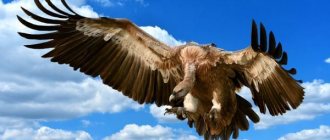Yorkshire terriers come in different colors, but white coat color is especially popular among owners of dogs of this breed, although its owners are not recognized as purebred Yorkies.
The breed appeared in the 19th century in the counties of Yorkshire and Lancashire in Great Britain. This is where the name came from.
The dog is miniature in size. Yorkies have a cheerful, inquisitive character, and they are very smart.
The advantage of keeping this breed is not only its small size, but also the absence of undercoat, so the pet does not shed or cause allergic reactions.
In this article we will talk about white Yorkies and also show their photos.
Do white Yorkies exist?
There is no pure white color in the breed.
There are three colors close to white:
- beaver;
- biro;
- golddust.
NOTE!
But still, Biewer Yorkies have more white color. They often come in three colors, with white being the predominant color. But everything will depend on the individual characteristics of the dog.
Biro-Yorks have no black coat at all. They are characterized by a chocolate-white combination with a golden tint.
White color also predominates in Yorkie mermaids, which are also called the “Russian mermaid”. Many call it an independent breed. Speaking about light color, it is called white or off white.
If we talk about the standard Yorkshire Terrier, then its color is white with dark spots.
Training a Biewer Terrier dog
The breed is not a service breed, so all training comes down to learning simple basic commands, as well as teaching good manners and obedience. Dogs have a well-developed intellect; they quickly understand what their owner and trainer want from them.
The only thing that can slow down the process of education and training is natural stubbornness, which is characteristic of all terriers. Persistence, endurance and patience are the qualities that will help cope with the willfulness of the trainee.
History of appearance
This new type of terrier was initially rejected, but the attractive appearance of the puppies prompted breeders to identify them as a subspecies of Yorkshire terriers and call them Biewer-Yorks - on behalf of the German dog breeder Werner Biewer , who took up the issue of breeding a new subspecies of the breed.
This happened in 1984, and in 1989 the new breed received an official calling among dog handlers. The first puppies, which became known as Biewers, had white fur with black golden stripes.
In 2007, Biewer Yorkies were brought to Russia.
Expert opinion
Kozhevin Semyon Kirillovich
Expert dog handler.
In its external descriptions, the Biewer resembles the Yorkshire Terrier in every way. The dog is distinguished by its compact size, proportional build, straight and silky coat. All terriers, including white ones, have a friendly character. They get along well with children and become family favorites.
What standards recognized the young breed?
Since 1989, Germany has had a standard for describing toy terriers with unusual colors. Under the name "Biewer Yorkshire Terrier a la Pom Pont" they are registered in the German Dog Fanciers Club (Allgemeiner Club der Hundefreunde Deutschland).
The official standard of the Biewer Terrier breed was published by the Russian Canine Federation in the publication “Vestnik RKF” in April 2009. According to this standard, the breed was included in Group IX “Companions and decorative dogs”. From this moment on, owners of dogs of this breed were allowed to attend Russian exhibitions of the CAC rank.
The new edition of the breed standard was adopted by the commission of the Russian Canine Federation in 2022. It takes into account data from the current version of the American Kennel Club standard. In America, the breed has been included in the Mixed Group of Dogs (Miscellaneous) since 07/03/2019.
Important : puppies born in Russia are registered in the RKF or in the IBC - International Biewer Club.
According to the RKF breed standard:
- Body type. The body is almost square, but the length of the body is slightly greater than the height at the withers.
- Rib cage. Wide. Ribs – rounded, moderately convex.
- Back. With a strong, well-developed lumbar region.
- Limbs. Direct. Front - with elbows pressed tightly to the body. The hindquarters are muscular, with straight hocks.
- Paws. Round shape. The fingers are arched and have fur. Black and flesh-colored pads are allowed. The claws can be black or white.
- Gait. Confident with smooth and linear movements. The tail is raised during movement. The limbs (front and rear) do not extend beyond the same plane during movement of the animal.
- Neck. Dry, with tight-fitting elastic skin. Length – average.
- Head. Slightly rounded.
- Muzzle. The ratio of the length of the muzzle to the length of the head is 1/3.
- Nose. With a pure black lobe.
- Bite. Straight or scissor-shaped is allowed. The teeth are straight and do not have an alveolar slope.
- Ears. Triangular shape. Small size. They are standing. Located closer to the back of the head, the distance between the ears is small.
- Eyes. Almond or round shape is allowed. Size – medium. The look is lively, meaningful, expressive. Eyelids are black. Color – dark.
- Tail. In the shape of a sickle. Set high. When moving, carried gracefully above the topline. Abundantly covered with flowing hair.
- Coat. This breed of Yorkie (Biewer) has a long, flowing coat with a soft texture reminiscent of silk. There is no undercoat. The hair is straight, long, reaching the ground. It is allowed to collect the hair on the head in a single ponytail.
- Color. The color must contain three colors. The breed standard allows several color combinations: black (blue), red-red (golden) and white. The limbs should be white from the paws to the elbows and knee joints. The belly, chest, tip of the tail are white.
- Height at the withers. Ranges from 17.78 to 27.94 cm.
- Weight. Allowed from 1.81 to 3.63 kg.
- How long do they live? Biewer Yorkies are long-lived. The average life expectancy is from 12 to 16 years.
Important: according to the modern breed standard, colored spots on the body should not predominate.
Advantages and disadvantages
Advantages of dogs of this breed:
- have high intelligence and are quickly trainable;
- they love attention and are happy to demonstrate their skills, not without encouragement, of course;
- They love to spend time playing games, so they are ideal for children aged 6-7 years. But you should not leave small children with the dog;
- the dog is great for energetic people - it will accompany its owner on walks, jogs, etc.;
- Yorkshire Terrier is brave. He can rush into battle even against a large dog. But in order to protect the baby from injury, such collisions should not be allowed;
- Yorkies have good hearing and vigilance, they bark loudly, and they have guarding qualities;
- Thanks to its compact size, you can take your pet on a trip;
- Due to the lack of undercoat, the Yorkshire Terrier does not cause allergies.
Disadvantages of the breed:
- sometimes the Yorkshire Terrier can be disobedient and reluctant to follow the owner’s commands;
- The pet can sometimes be capricious and wayward. But this is subject to the lack of proper education on the part of the owner;
- do not get along well with other animals in the house, are not always friendly with guests, and may even bark at them;
- while walking, scandals often break out with passing dogs, even if the latter are much larger in size;
- If there is a small child under 6 years old in the house, then there is no need to purchase Yorkies yet. Children often injure fragile animals, and a dog may even bite if the baby causes her discomfort;
- Yorkshire terriers require a lot of attention to their person, they will be intrusive, following on the heels of their owner;
- The breed is picky about food; not all foods are suitable for Yorkies. If you switch to dry food, it is better to take super premium food;
- In winter weather, your dog will need clothing and accessories.
Read about other advantages and disadvantages of Yorkshire terriers here.
Upbringing
Yorkshires are smarter than many other dog breeds, so training is usually not particularly difficult. If you start from an early age, the task will turn out to be extremely simple. The first thing you should prepare your dog for is the existence of various loud sounds. At first, you shouldn’t even talk too loudly or turn on the music “to the fullest” - let the dog gradually get used to the existence of noisy people, technology and the metropolis.
The same goes for being in too close contact with people. Although you want to immediately cuddle the baby and throw out all your tenderness on him, you shouldn’t do this. Let your pet learn about the world around him gradually, and only when he is completely comfortable at home and gets used to everyone in the household, start showing him the world around him. The correct training procedure allows you to raise a confident dog that is not afraid of any challenges.
You can train an animal to use the toilet at home in the same way as representatives of other breeds. The dog usually feels the urge soon after eating, the readiness to go to the toilet is expressed in a certain fussiness and slight nervousness, so keep an eye on your pet, and as soon as he begins to show such activity, immediately grab him and take him to where you have equipped the tray
It is important to start setting it up before the puppy arrives - then training will happen more quickly
Don’t forget that you need to praise your four-legged dog for doing things correctly by treating him to something tasty. To avoid unpleasant surprises in the early stages of training, you can dress the animal in a diaper, which, however, will have to be changed after each time, even if the baby correctly understood where his toilet is.
Despite the fact that the dog is smart and understands commands well, the problem with training it is that the pet is restless - it is too active and cannot concentrate on training or any other task for too long. To quickly convey to your mentee that you are pleased with him, decide in advance on a word or phrase that is a universal expression of approval. The dog will quickly remember it and will understand that its actions are positive.
Yorkshiremen are able to entertain themselves on their own - they easily come up with games for themselves, which is generally good. Another thing is that in their fun they often tend to use objects and things that are not at all intended for this.
The owner’s task is to stop such attempts in time. It is unacceptable to use physical punishment - only a stern tone and the cry of “fu” are suitable, and even then only immediately at the “moment of the crime”, and not sometime later. For a Yorkshire Terrier, it will be very useful to accustom him to a certain schedule according to which he will eat, walk, bathe, and so on.
Distinctive features
Yorkshire White Terriers are among the smallest dogs. Their maximum weight reaches 3.1 kg.
But height and lowest weight are not limited to certain limits. Breeders recommend purchasing an adult dog weighing from 2 to 3 kg.
All indicators of both height and weight are purely individual. Yorkies grow up to a maximum of 28 cm, the average height of a pet is 17 cm. At the same time, females are slightly taller than males (about 5 cm) and 30 grams heavier.
external indicators also serve as features of Yorkies :
- the coat is long, falling evenly from the sides;
- The parting starts from the tips of the nose to the tail;
- ears stand up, eyes and nose are black.
Lifespan
Because of their agility and playfulness, Yorkshire Terrier dogs enjoy good health. Their muscular and cardiovascular systems are strengthened through constant movement.
IMPORTANT!
And if there is proper care, the life expectancy of doggies can increase.
On average, white Yorkies live 13-16 years, with a maximum life expectancy of 20 years.
White color options
The White Yorkie cannot be classified as a breed standard .
White fur usually has a yellowish tint. But with age there is a gradual fading to white.
The remaining areas contain tan, which may be consistent with the breed.
This color is popular.
Sometimes the Golden York variety is called the white Yorkshire terrier, since its coat can be light in color with a golden coating.
Unrecognized colors
It is worth noting that not all dogs fit the described breed standard. There are a considerable number of terriers that have rather unusual colors. Unrecognized colors that do not fit the standard include the following six types of coat colors.
Biro York
These dogs are very similar in appearance to Biewer Yorkies. Their main feature is that they do not have the gene that is responsible for the appearance of black fur. That is why such Yorkies are only light in color.
Additional Information! This variety of Yorkies appeared relatively recently and therefore they do not have a standard.
Beaver York
The Biewer Yorkie is a rare breed of Yorkie. They are quite rare. Biewers look unusual; their appearance is in many ways similar to Biro-Yorks. They are also painted in light colors. However, some dogs have darker fur. Most often it occurs on the head. The body is painted white, sometimes with a silver tint.
Golddust
Such dogs are considered the rarest, since they are not found as often as others. The main distinguishing feature of these dogs is their unusual golden coat color.
Until 2007, they could not be classified into any breed. However, in the middle of this year they were officially identified as a separate breed called “Golddust”. The homeland of these dogs is Germany, but today they can be found in other countries.
Mermaid
These are quite beautiful and unusual dogs that can be called mermaids. This variety was bred relatively recently in Russia. These dogs differ from other animals in their long and thick hair. It is painted golden, with a slight yellowish tint.
Chocolate
The Chocolate Yorkie is one of the most beautiful representatives of the breed. Sometimes dog breeders decide to get themselves chocolate terriers. They, like the silver Yorkie, have a fairly thick coat. At an early age, such dogs have softer hair. However, over time they become rougher. The coat is dyed dark. On the head it is completely black, on the body it is slightly lighter.
Important! The coat of chocolate York terriers is uniform, without multi-colored spots.
Black
Dogs with jet-black fur are considered quite rare. Therefore, most black terriers have a grayish or brownish coating on the surface of the body. Even if the dog was perfectly black at an early age, over time its shade may change slightly and become lighter.
Does the puppy's white color change as it ages?
Color change in Yorkshire Terrier puppies occurs from 4 months.
If a dog was born with a silver-blue color, then by 6 months some representatives of the breed lighten significantly, acquiring a whitish color. By the age of one year, they acquire a steel-white color with a silver tint, which is extremely undesirable for breeders, as this indicates that the Yorkie is not purebred.
Health
The successful breed gene pool gave these pets fairly good health, greater resistance to joint dislocations and improved bone structure.
However, some pathologies can also be diagnosed in Biewer York dogs.
Genetic pathologies:
- progressive retinal atrophy;
- primary lens luxation;
- Legg-Calvé-Perthes disease;
- extrahepatic portocaval (portosystemic) shunts.
Other diseases to which the breed is prone:
- acute pancreatitis;
- gum disease;
- tartar;
- limb fractures.
Important: most hereditary pathologies are detected in puppies at an early age, so before purchasing a dog, ask the breeders for the results of genetic tests.
How to choose a puppy?
When purchasing a white Yorkie, there are many factors to consider. The fact that a puppy is playful and cheerful does not mean its health.
You should pay attention to everything - the dog’s fatness, the quality of its coat, how active and mobile the baby is. The ears and oral cavity are examined.
Regarding the coat, it should be shiny, healthy in appearance, and shimmer in the light.
Pay attention to the nose, it should be wet and not hot, even if the Yorkie spent time playing.
The corners of the eyes should be clean and free of discharge.
There is excitement and life in the look.
Puppies of this breed, even white ones, have dark eye color.
Inspect the ears - their insides should be clean, the presence of dirt and especially crusts is unacceptable. The skin inside the ears is pale pink.
Feel free to sniff the area of the ears and mouth; there should be no unpleasant odor coming from there. If it is present, then this may indicate worms, infections or ear mites.
When examining your dog's mouth, if you notice bluish discoloration, pale or whitish gums, you should ask the breeder about the puppy's health. Such symptoms may indicate anemia or a lack of other nutrients in the animal's body.
NOTE!
You also need to examine the puppy’s teeth - there should be as many of them as are appropriate for the Yorkie’s given age. The teeth should be straight, especially if you are choosing a dog for exhibitions and breeding. If there are deviations in the contact of the incisors, then the pet will be considered a non-exhibition specimen.
But since the Biewer-York (it is their white coat color that most often predominates) is considered not a show breed anyway, no special attention is paid to the dog’s bite.
Rules for caring for a Biewer Yorkie
Long silky hair, beautifully falling like a flowing mantle, is not only the main decoration of a pet, but also the main element for care. Without regular brushing, the coat may become matted. To prevent tangles from appearing, dogs need to be combed daily. First, with a sparse comb made of natural materials, then with a massage brush.
For hair care you will need:
- Massage brush with natural bristles or metal teeth with antistatic coating.
- Fine-tooth comb.
- Colt cutter.
- Comb with rotating teeth.
- Elastic band for bangs.
The wool of beavers practically does not get dirty, it has dirt-repellent properties. But, if the dog does get dirty, you can bathe him using shampoo and conditioner for dogs. After bathing, the coat should be thoroughly dried and then combed. Puppies are taught to bathe and brush themselves from an early age (2-3 months).
If the owners do not dream of the laurels of champions, or do not plan to seriously engage in a show career with their dog, they can cut their pets short. The fur between the toes and on the tips of the ears is regularly trimmed for hygienic purposes. Claws are shortened as they grow at home or in a salon.
Checking the condition of your teeth and ears should become a good habit. The teeth are examined and regularly cleaned with a special toothbrush and products from pet stores. To clean teeth from plaque and tartar, bones are used. The best ones are those sold in specialized pet supply stores.
The auricle is carefully cleaned of accumulated wax and other contaminants to prevent the development of ear infections of a bacteriological or parasitic nature. You should not use cotton swabs for cleansing - this is dangerous, you can accidentally injure the animal's eardrum. It is better to do this with a cotton pad soaked in warm boiling water or ear lotion.
Clean the eyes from dirt with a damp cotton pad or swab. To moisturize, use warm boiled water, a special veterinary eye lotion, and a warm decoction of chamomile. It is unacceptable to use for this: alcohol solutions, antiseptics, hydrogen peroxide, chlorhexidine.
